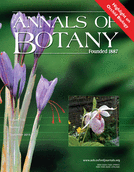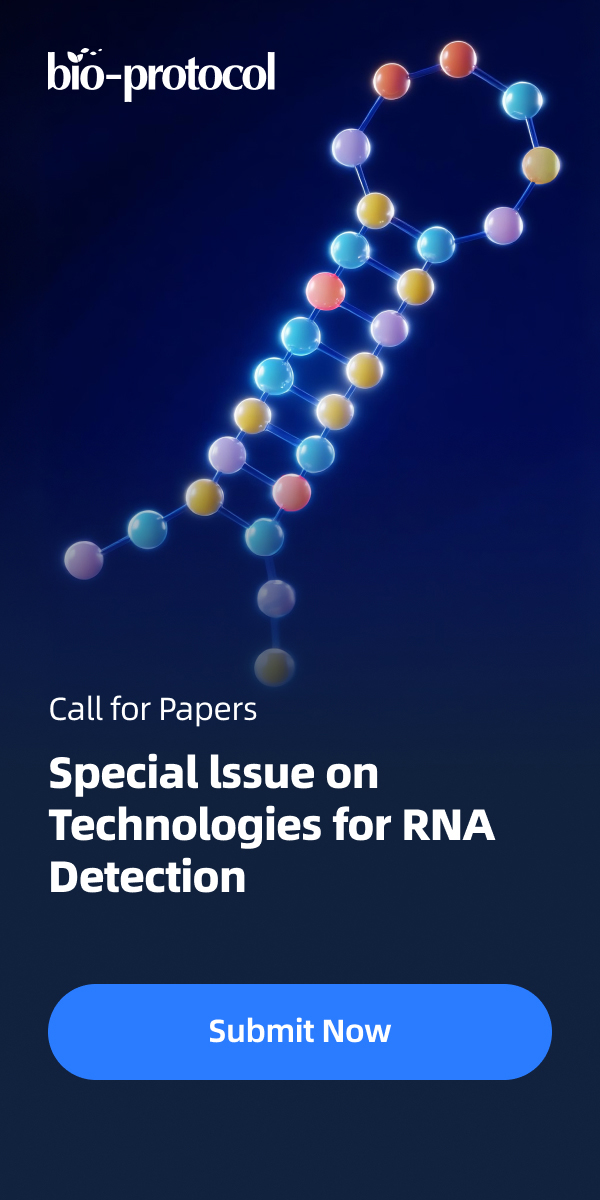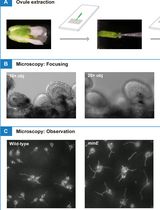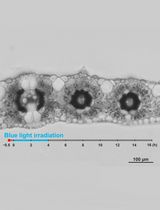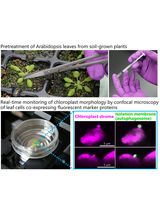- EN - English
- CN - 中文
Documentation of Floral Secretory Glands in Pleurothallidinae (Orchidaceae) Using Scanning Electron Microscopy (SEM)
使用扫描电子显微镜(SEM)观察肋茎兰(兰科)花分泌腺
发布: 2016年11月20日第6卷第22期 DOI: 10.21769/BioProtoc.2021 浏览次数: 10375
评审: Samik BhattacharyaNing LiuAnonymous reviewer(s)
Abstract
A clear, step by step description of the treatment of orchid flowers, subtribe Pleurothallidinae, with Critical Point Drying for SEM is presented. It shows that a simple, short fixation and dehydration method prior to Critical Point Drying is sufficient to obtain good results.
Background
Pleurothallidinae (Orchidaceae) have relatively small flowers that exhibit a wide variety of ornaments on the perianth parts, especially on the sepals and lip. It is clear that most of those play an important role in attracting and arresting pollinators, which in most cases are known to be small flies. However, it is difficult to judge just from looking at photographs from the stereoscopic microscope if the observable thickenings, papillae or hairs are actually secretory glands. Scanning Electron Microscopy (SEM) can be a powerful tool to explore these flowers in greater detail, aiding to locate, compare and identify those glands (Karremans et al., 2015).
Materials and Reagents
- Snap cap vials (10 ml) (VWR, catalog number: 548-0621 )
- Gloves (nitrile, powder free)
- Petri dish
- Double sided ultra-smooth carbon adhesive tape, 12 mm diameter (Electron Microscopy Sciences, catalog number: 77827-12 )
- Plastic box or desiccator with dry silica gel
- Ethanol
Note: For steps using diluted ethanol use a 96% non denatured ethanol with distilled water, for steps using pure ethanol use a min. of 99.9%, water free ethanol. - Acetone, HPLC Plus, for HPLC, ≥ 99.9% (Sigma-Aldrich, catalog number: 650501-1L )
- Carbon dioxide, technical grade (in gas cylinder with feed pipe)
- Argon gas 4.6, technical quality
Equipment
- Aluminium specimen mount, JEOL(Ted Pella, catalog number: 16231 )
- Soft pincet (e.g., light forceps, [VWR, catalog number: 232-2119 ])
- SEM specimen mount tweezers (Electron Microscopy Sciences, catalog number: 76800 )
- Platina/palladium (Pt/Pd) target, 57 x 0.1 mm (Pt/Pd ratio, 80:20)
- Automated critical point dryer (Leica Microsystems, model: EM CPD300 )
- Rotary mixer (Ted Pella, Pelco®, model: R1 )
- Holders and baskets for Leica critical point dryer (e.g., Fine mesh specimen holder with mesh specimen baskets or filter disc holder with 4 wells)
- Sputter coater (Quorum Technologies, model: Q150T S ) with rotating holder for 6 SEM stubs (Q150T S/E/ES Sample Preparation System Instruction Manual), film thickness monitor and RV3 Rotary Vane pump (Edwards, model: A65201903 )
- Field emission scanning electron microscope (JEOL, model: JSM-7600F ) (Figure 1)
Note: This product is discontinued, but any standard scanning electron microscope will do (for example JEOL, model: JSM-IT100 InTouchScopeTM)
Figure 1. Field emission scanning electron microscope in place and ready for use
Software
- Jeol PC-SEM version 2.1.0.3
Procedure
文章信息
版权信息
© 2016 The Authors; exclusive licensee Bio-protocol LLC.
如何引用
Karremans, A. P., van Heuven, B. J., Langelaan, R. and Gravendeel, B. (2016). Documentation of Floral Secretory Glands in Pleurothallidinae (Orchidaceae) Using Scanning Electron Microscopy (SEM). Bio-protocol 6(22): e2021. DOI: 10.21769/BioProtoc.2021.
分类
植物科学 > 植物细胞生物学 > 细胞成像
植物科学 > 植物细胞生物学 > 组织分析
细胞生物学 > 细胞成像 > 电子显微镜
您对这篇实验方法有问题吗?
在此处发布您的问题,我们将邀请本文作者来回答。同时,我们会将您的问题发布到Bio-protocol Exchange,以便寻求社区成员的帮助。
Share
Bluesky
X
Copy link


